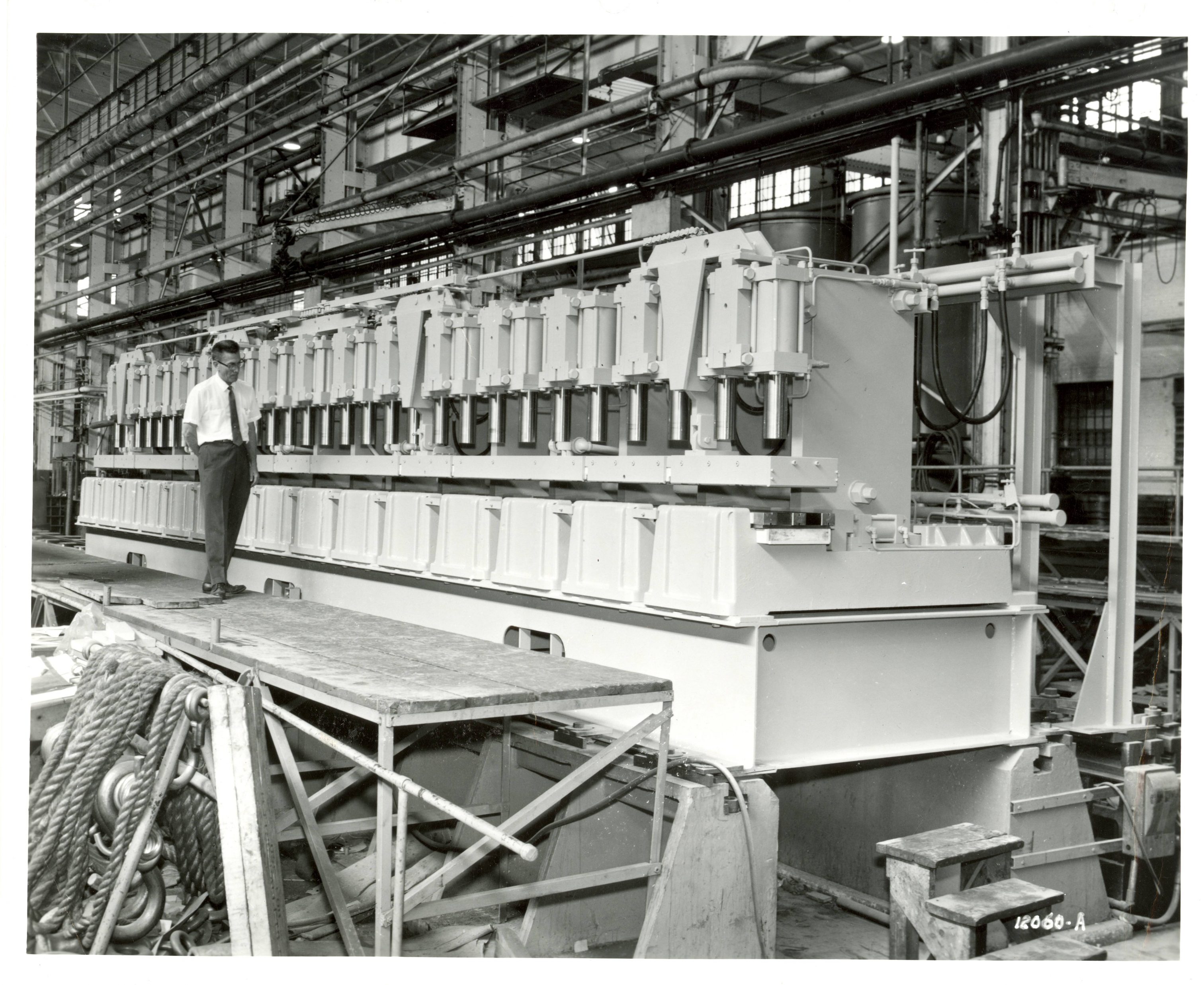The Nordberg Manufacturing Company was a business that manufactured many different types of heavy machinery, engines, and hoists, as well as mining and railway equipment. Bruno V. Nordberg founded the company in 1890. It existed as the Nordberg Manufacturing Company until 1970 when it became part of Rexnord, a corporation that remains to this day a major manufacturing firm.
Bruno Nordberg was educated as an engineer at the Finnish University of Helsinki before immigrating to the United States in 1880.[1] After arriving in Milwaukee, he worked for the E.P. Allis & Co. for almost ten years. It was after designing a new steam-engine governor that Bruno Nordberg left to create his own manufacturing firm.[2] Nordberg received his initial financial backing from many of the Milwaukee’s most prominent personages in industry and commerce. [3] Early backers of Nordberg included Alonzo Straw, Frederick L. Horneffer, Jacob E. Friend, Frederick Pabst, Emil Schandein, and F. A. Wilde.
Nordberg soon expanded into the production of diesel engines after securing a license to use Rudolf Diesel’s patents in the United States.[4] It was after this that the company began to specialize in the marine applications for these new engines.[5] By 1916, Nordberg’s manufacturing had diversified, producing steam engines, diesel engines, air compressors, pumps, hoists, and stamps.[6] This diversification continued into the next decade, with Nordberg advertising in 1922 its ability to design and build specialty machinery to order.[7]
Through the 1920s, Nordberg continued its rapid expansion, especially as a producer of mining equipment. In 1925, the Milwaukee Journal hailed Nordberg as being the largest manufacturer of mine hoists in the world.[8] By 1930, the Nordberg Manufacturing Company was valued at $1,837,000, making it Milwaukee’s fourteenth most valuable manufacturing establishment.[9] Despite the difficult economic conditions of the 1930s, Nordberg’s growth continued as demand for mining equipment held through the decade.[10]
During the Second World War, the Nordberg Manufacturing Company suspended its traditional manufacturing and began producing torpedo tubes for the war effort, underscoring the company’s adaptability.[11] After the war, Nordberg returned to its normal peacetime production and even expanded into new markets. By the early 1950s, Nordberg employed 2,460 workers and produced diesel engines and rock and ore crushers, as well as railway equipment.[12]
In 1970, the company was purchased by and merged with Rex Chainbelt, another Milwaukee-based manufacturing firm, to create the Rexnord Corporation.[13] Since then Rexnord has moved most of its manufacturing away from Milwaukee while expanding its global footprint through the purchase of foreign manufacturers. As a result, the company now employs more than 8,000 people and has facilities on six continents. In addition to its traditional production lines, Rexnord has expanded into new industries such as aerospace, plumbing, energy, and agriculture.[14] Despite the reduction in Milwaukee-based manufacturing, Rexnord reaffirmed its local roots when its headquarters were moved to the Water Center building near the city’s downtown area in 2014.[15]
Footnotes [+]
- ^ John Gregory, Southeastern Wisconsin: A History of Old Milwaukee County (Milwaukee: S.J. Clarke, 1932), 368-369.
- ^ John Gurda, The Making of Milwaukee (Milwaukee: Milwaukee County Historical Society, 1999), 166.
- ^ Robert C. Nesbit, Urbanization and Industrialization, 1873-1893: History of Wisconsin (Madison, WI: Wisconsin Historical Society, 2013), 174.
- ^ Nesbit, Urbanization and Industrialization, 174.
- ^ Nesbit, Urbanization and Industrialization, 174.
- ^ A.S.M.E. Mechanical Catalog and Directory (New York, NY: American Society of Mechanical Engineers, 1916), 17.
- ^ Condensed Catalogues of Mechanical Equipment (New York, NY: The American Society of Mechanical Engineers, 1922), 8.
- ^ Gurda, Making of Milwaukee, 243.
- ^ Gregory, Southeastern Wisconsin, 370.
- ^ Gurda, Making of Milwaukee, 300.
- ^ Gurda, Making of Milwaukee, 308.
- ^ Richard W. Cutler, Greater Milwaukee’s Growing Pains, 1950-2000: An Insider’s View (Milwaukee: Milwaukee County Historical Society, 2001), 244.
- ^ Gurda, Making of Milwaukee, 416.
- ^ Overview, Rexnord Corporation website, http://rexnordcorporation.com/about-us/overview.php, accessed October 14, 2017.
- ^ “Rexnord Corp. Relocates Headquarters to Global Water Center,” Milwaukee Business Journal, accessed October 14, 2017.
For Further Reading
Gurda, John. The Making of Milwaukee. Milwaukee: Milwaukee County Historical Society, 1999.


0 Comments
Please keep your community civil. All comments must follow the Encyclopedia of Milwaukee Community rules and terms of use, and will be moderated prior to posting. Encyclopedia of Milwaukee reserves the right to use the comments we receive, in whole or in part, and to use the commenter's name and location, in any medium. See also the Copyright, Privacy, and Terms & Conditions.
Have a suggestion for a new topic? Please use the Site Contact Form.